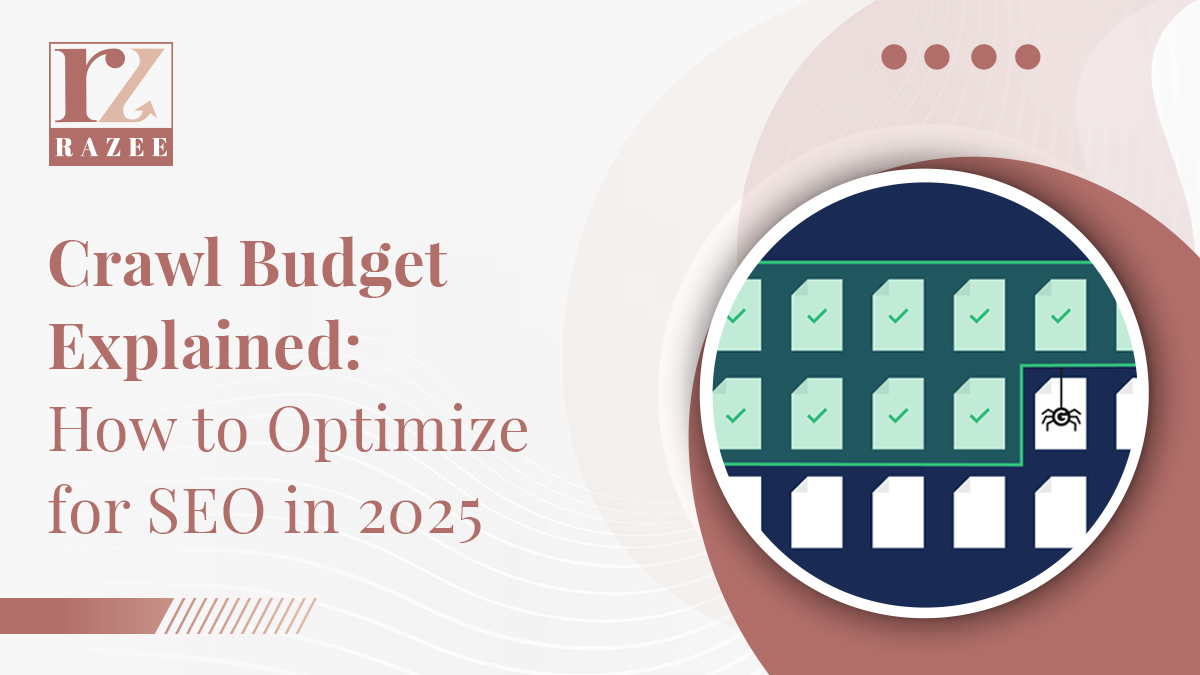If you have been pouring your heart into your website and still feel like Google keeps walking past it—you are not alone. Many people think SEO is only about keywords, backlinks, and pumping out blog posts like there is no tomorrow. But there is this sneaky, often-ignored element that could be quietly holding your growth back: crawl budget.
Think of it like this. Google sends out its bots (tiny digital scouts) to check out your site. But they are on a timer. They won’t check every single page unless you make it easy—and worthy—for them to do so. That is where technical SEO strategies step in, especially when you are playing in 2025’s crowded online space.
This blog is your no-fluff guide to understanding crawl budget, why it matters, and how to make it work in your favour using simple, everyday SEO optimization habits. No jargon. Just straight talk and real results.
What Is Crawl Budget, And Why Should You Even Care
Here’s the thing—Google does not have unlimited time to spend on your website. Every time its bots visit, they have a set number of pages they will scan. That is your crawl budget. It is like inviting someone over for tea and only having 30 minutes to show them your whole house. If your living room is a mess, your guest might never even see the kitchen.
If you have broken pages, duplicate content, or long loading times, Google might stop crawling before reaching your best stuff. That is a missed opportunity. Especially when you are creating content meant to be found.
And in 2025? With AI-generated content flooding the web, Google has become pickier. It now expects well-organized, fast-loading, high-value websites. So, cleaning up your digital space isn’t just lovely—it’s necessary. Smart digital marketing strategies now include keeping your crawl budget lean and tidy. This small detail packs a punch when it comes to SEO optimization.
So if visibility matters (and let us be honest—it does), your crawl budget deserves more attention than it is getting.
What Is Different About The Crawl Budget In 2025?
A few years ago, not many people even talked about the crawl budget. Fast-forward to 2025, and it’s quietly become a deal-breaker. The game’s changed. Search engines are smarter, but they are also pickier. They want quality, speed, and structure.
With AI tools pushing out thousands of pages daily, the competition has exploded. Google’s bots are trying to stay sane. That means they are skipping fluff and sticking to clean, helpful, fast websites. If yours takes too long to load or is filled with low-value pages, it is going to be skipped like a bad ad.
The good news? You don’t need to be a tech wizard to stay ahead. Most of the fixes are just good habits. Keep your site updated. Remove what’s not useful. Speed it up. Link things. These are the kind of moves that make your site Google’s favourite guest.
And these little wins? They all fall under smart technical SEO strategies. They are the behind-the-scenes helpers that make everything else you do—blogs, products, services—shine brighter in search.
Practical Ways To Optimize Your Crawl Budget (Even If You Are A One-Person Team)
You don’t need a big budget or a tech team to get this right. You need to be intentional. Start with an audit. Look at your top-performing pages—those are your VIPs. Make sure they load fast, link to each other, and don’t have broken images or outdated info.
Next? Clear out the digital junk. Do you have blog posts from 2018 that no one reads? Archive or update them. Do you have pages that take forever to load? Compress those images—slow sites waste crawl time.
Use a clean sitemap and make sure Google knows where to go. Set up your robots.txt file smartly—but don’t block too much. Let the bots do their job. And don’t forget internal links. Guide Google around like a polite host at a party. “Oh, you liked this? Here is another one you will love.”
Simple, right? These are not rocket science tactics. They are consistent, everyday SEO optimization steps that build trust with search engines.
How Content And Crawl Budget Work Together
Your content is only as good as its discoverability. You could have the most insightful blog on the planet, but if Google never sees it? It is like hanging a beautiful painting in a locked room.
So here is the link—your digital marketing strategies and your crawl budget are directly connected. Every time you post a new article, update a page, or add a product, you are telling Google: “Hey, come check this out!” But if your site’s cluttered, slow, or confusing, Google won’t bother.
Make internal linking a habit. Refresh older content regularly. Stop creating 100 short blogs—create fewer but richer ones. Quality beats quantity in 2025. And when you have got a clear content structure and good page hygiene, your crawl budget stretches further.
That is when your content strategy and technical SEO strategies stop working in silos—and start building something powerful together.
What Happens When You Ignore Your Crawl Budget
If you are not thinking about your crawl budget, here is what could happen. Google might stop crawling your site regularly. Your fresh content might never show up in search. Or worse, it might rank lower than it should.
Traffic slows down. Leads drop. Sales take a hit. All while you’re wondering why your efforts aren’t working. And it is not personal—it is technical. Bots don’t care how much love you poured into that blog post. If the page is buried under a mess of redirects and broken links, it’s likely to get skipped.
That is why part of smart digital marketing strategies now includes regular technical cleanups. Check your sitemap. Fix those 404s. Use tools to see what Google sees. It’s not about perfection—it’s about progress.
Skipping this step isn’t just risky—it is a slow leak in your visibility bucket.
A Final Check-In Before You Head Off
If you made it this far, you now know that crawl budget isn’t some geeky side note. It is part of your bigger visibility story.
And the best part? You don’t have to be perfect. You have to care—and start taking small, consistent steps. Whether it is updating that old blog post, cleaning up a few broken links, or speeding up your home page, it all adds up.
So next time you think of SEO optimization, remember—it is not just about keywords. It is about structure. Speed. Relevance. And the way all of that connects back to your users. Put your best pages in the spotlight. Keep things tidy. Show Google the good stuff. That is what smart technical SEO strategies will look like in 2025.
And when you stack that with thoughtful digital marketing strategies—you are not just being seen. You are being remembered.


